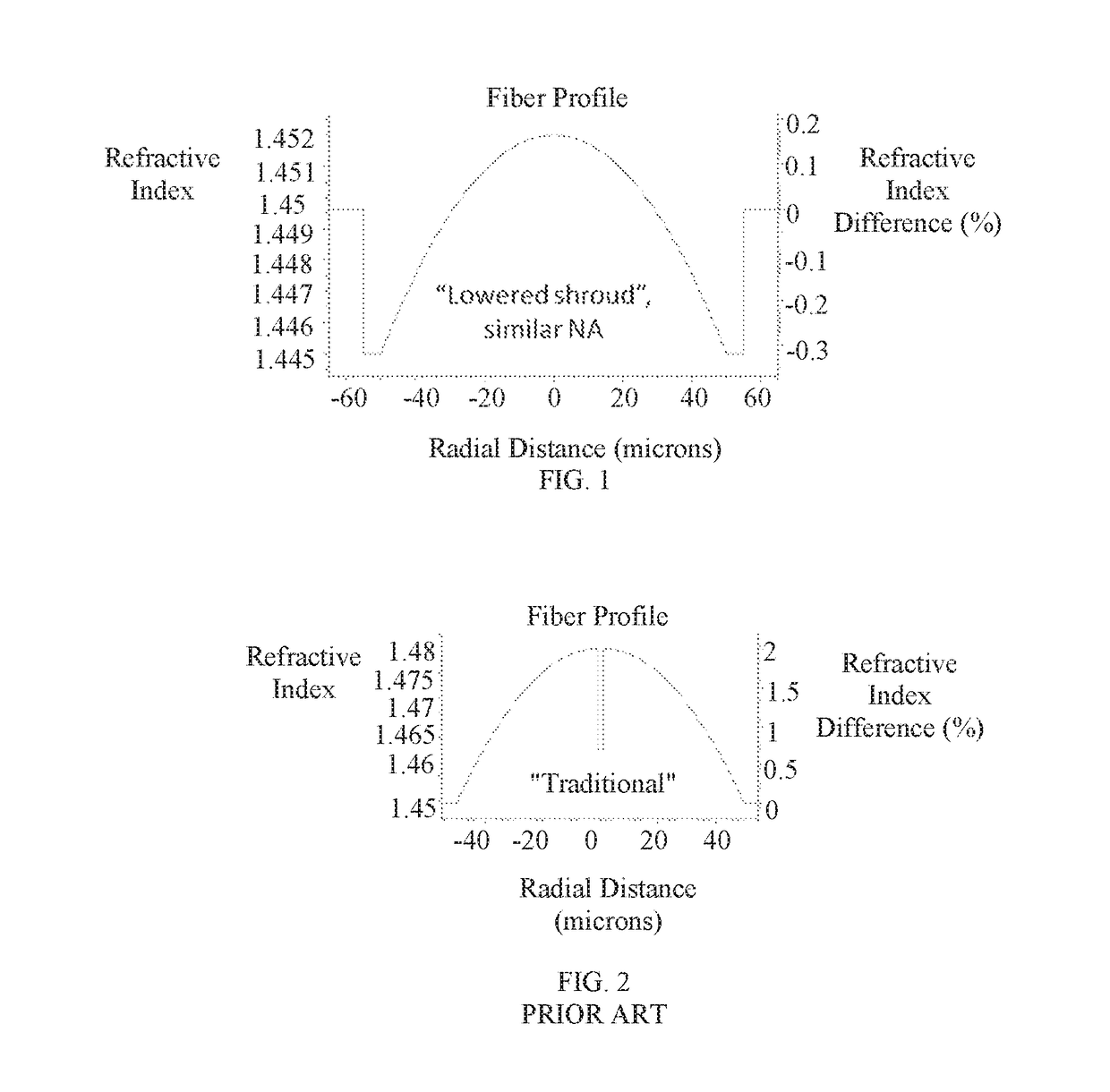Brightness preserving fiber beam combiner for reduced nonlinearities and intense radiation damage durability
a fiber beam and combiner technology, applied in the field of brightness preserving fiber beam combiners, can solve the problems that devices cannot provide all of these capabilities simultaneously, and achieve the effects of avoiding or reducing the “refraction index hole”, accurate parabolic refraction index profiles, and severe brightness degradation
- Summary
- Abstract
- Description
- Claims
- Application Information
AI Technical Summary
Benefits of technology
Problems solved by technology
Method used
Image
Examples
Embodiment Construction
[0015]In contrast to the prior art, the present invention relates to a large combiner whose waist width can confine a few-mode beam to a level that it is compressed to give the lowest BPP value, yet is enough wide such that it maintains intensity levels that are factors below the silica bulk damage. This dielectric / bulk damage threshold is mostly referred to as 5 w / μm2 and 10 w / μm2 for exit facet (silica-air boundary) and internal glass (i.e. material continua), respectively (Dawson et-al, Optics Express (2010)).
[0016]Traditional GI (graded-index) fiber fabrication is done by gradually doping of materials into the core, that, as a side effect, have high nonlinearity gain, of which SRS (stimulated Raman scattering) becomes a major challenge. A very common material used for index increasing is GeO2. However, the most prominent characteristic of this addition is its Raman Gain, which is ˜8-9 times higher than of pure silica (gR(Si—O2)≈1.05e−13 m / w, with spectral gain peak at stokes wav...
PUM
 Login to View More
Login to View More Abstract
Description
Claims
Application Information
 Login to View More
Login to View More - R&D
- Intellectual Property
- Life Sciences
- Materials
- Tech Scout
- Unparalleled Data Quality
- Higher Quality Content
- 60% Fewer Hallucinations
Browse by: Latest US Patents, China's latest patents, Technical Efficacy Thesaurus, Application Domain, Technology Topic, Popular Technical Reports.
© 2025 PatSnap. All rights reserved.Legal|Privacy policy|Modern Slavery Act Transparency Statement|Sitemap|About US| Contact US: help@patsnap.com

